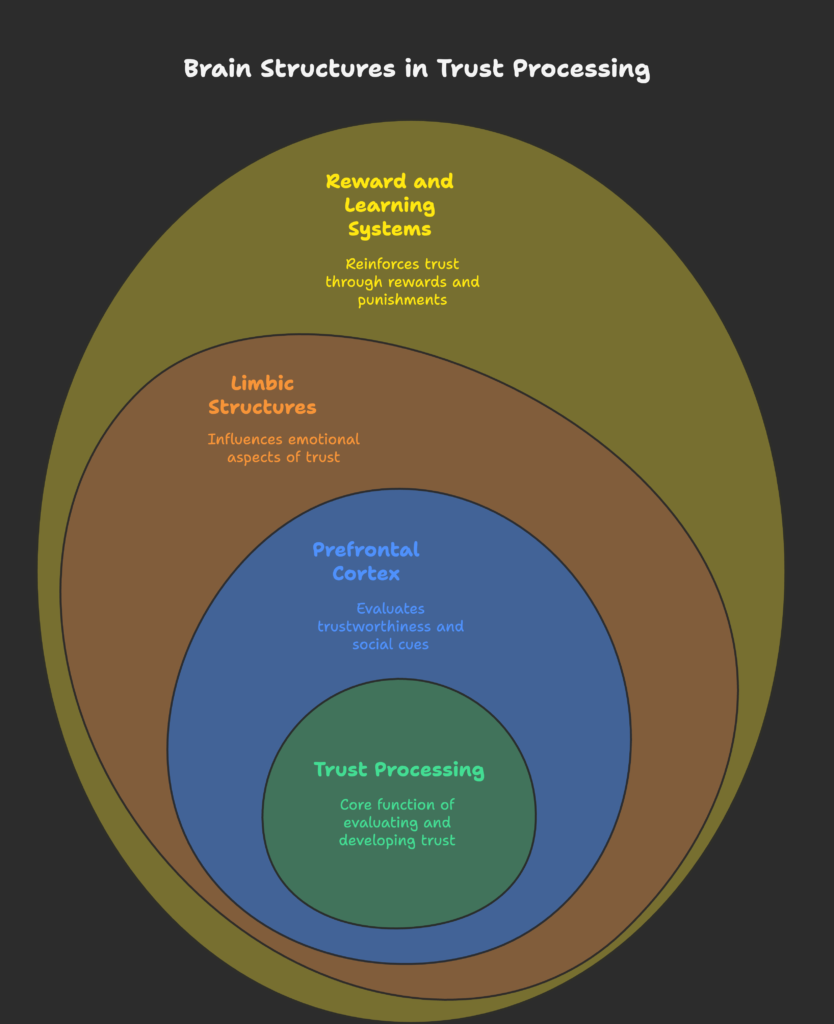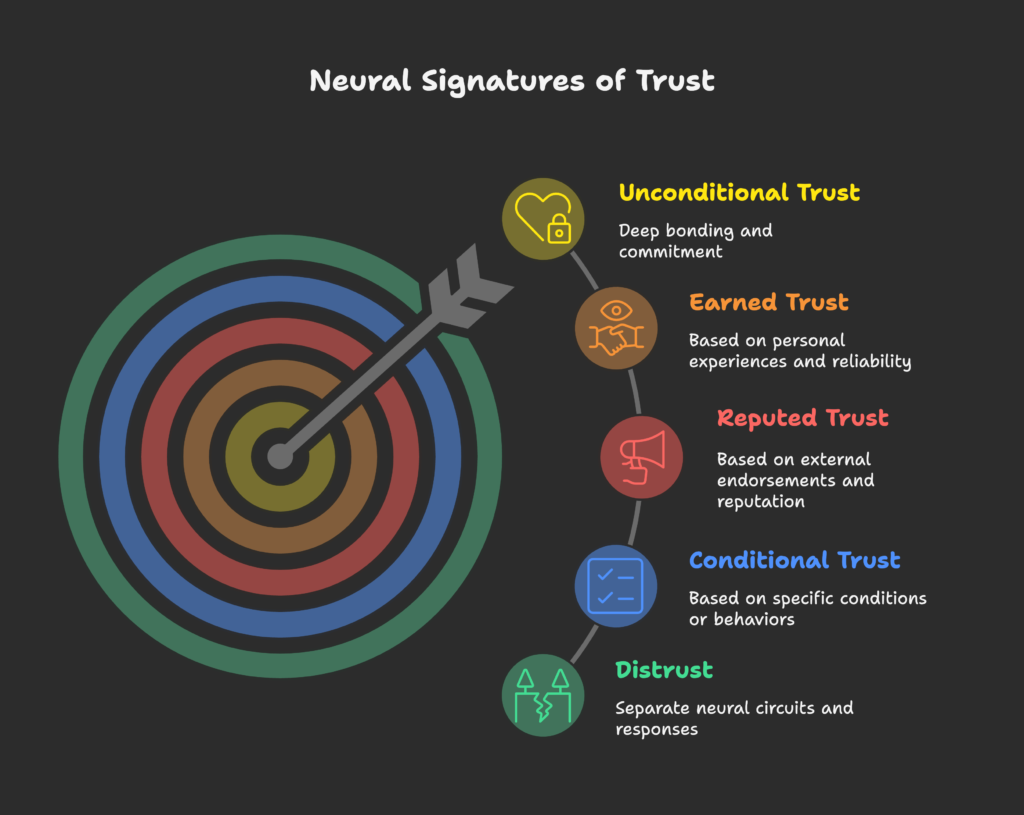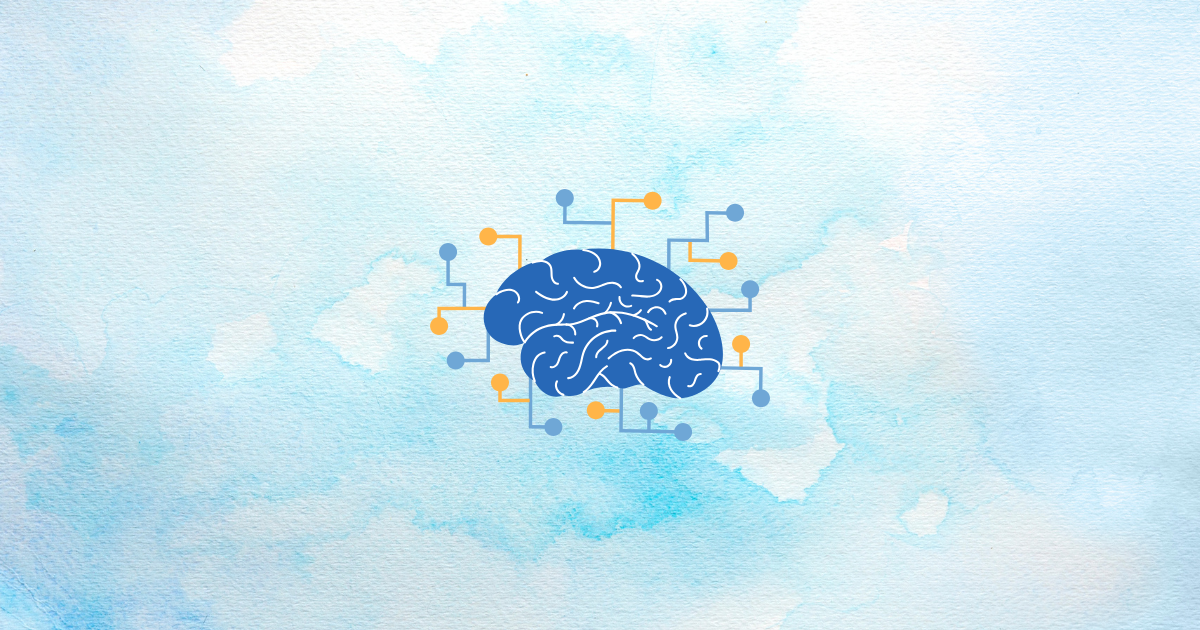Have you ever wondered how some brands or people instantly win your trust while others fail miserably? Could there be something in our brains that decides “Yes, I can rely on this” or “No, this feels risky”? In this article, you’ll discover the fascinating neuroscience behind trust – how your brain reacts, which chemicals drive that feeling of security, and how businesses and individuals can use these findings ethically. Ready to see how trust starts in the mind? Let’s dive in!
In this section: We’ll define trust from a neuroscientific angle, learn about the brain’s evolution in building social connections, and consider the enormous importance of trust in modern economies and societies.
Defining Trust from a Neuroscientific Perspective
Trust is more than just a fuzzy feeling – it’s a *neural process* where our brains decide if we can rely on a person, product, or institution. Over millennia, humans developed specialized mental circuits to gauge trustworthiness quickly. This evolution helped tribes cooperate for survival, explaining why trust is crucial for social functioning. Meanwhile, neuroscience shows trust and distrust aren’t just opposite ends of one scale; our brains often treat them as separate neural constructs, using distinct networks for each.
The Neurobiology of Trust Decision-Making
Several key neural networks come into play when we decide to trust (or not). *Oxytocin* (the “bonding hormone”) and *dopamine* (linked to rewards) are two major neurotransmitters that shape how open or guarded we feel. We also see an evolutionary foundation: many trust pathways are ancient, enabling quick, almost automatic judgments. Individual differences – like genetic or personality factors – add variation, so one person might trust more readily than another.
The Economic and Social Significance of Neural Trust Research
Research on brain-based trust matters because it gives businesses, healthcare providers, and tech companies a clearer roadmap for fostering genuine reliability. Imagine measuring trust levels in real time to improve user experiences or diagnosing trust deficits in certain psychological conditions. Neuroeconomics – the blend of economics and neuroscience – is unlocking new ways to understand how trust impacts decisions, shaping everything from marketing to conflict resolution.
Curious about which parts of the brain activate when you trust? Stick around, because we’re about to explore the key structures at play.
Key Brain Structures and Networks in Trust Processing
In this section: You’ll see how different areas of the brain – from the prefrontal cortex to the limbic system – coordinate to generate trust feelings. We’ll also explore how reward and learning systems reinforce trust or flag distrust.

The Prefrontal Cortex in Trust Evaluation
The *ventromedial prefrontal cortex (vmPFC)* is often called the “emotional brain’s manager” and plays a key role in evaluating trustworthiness. Meanwhile, the dorsomedial prefrontal cortex helps process social information, like reading someone’s intentions. The *paracingulate cortex* offers a deeper sense of whether a person’s behavior is consistent with trust norms. Interestingly, the brain shows different activity patterns in these prefrontal areas when we trust versus when we’re suspicious.
Limbic Structures and Emotional Components of Trust
The *amygdala* is famous for detecting threats, but it also influences trust decisions. If we sense danger, the amygdala can spark distrust. In contrast, areas like the *septal region* are linked to unconditional trust—think of a newborn’s bond with a caretaker. The *anterior insula* weighs the potential risks in trusting, bridging the emotional and rational sides of the brain. These structures work together to form a powerful emotional blueprint guiding us: “safe to trust” or “time to be cautious.”
Reward and Learning Systems in Trust Development
When trust pays off, the *ventral tegmental area* (VTA) releases dopamine, rewarding us. This reinforcement helps us learn whom to trust over time. The *caudate nucleus* also monitors outcomes—if someone betrays us, we adjust our future trust levels. The striatum, too, is central in anticipating rewards from cooperation. Essentially, our brain runs a “trust learning loop,” rewarding good experiences and punishing betrayals, shaping how we approach new interactions.
Now let’s zoom in on how different trust types – conditional, unconditional, etc. – reveal unique neural activity.
Distinct Neural Signatures of Different Trust Types
In this section: We’ll examine how the brain differentiates between conditional trust, unconditional trust, earned trust, and so on. You’ll learn why trust and distrust aren’t just flip sides of one coin, but have their own neural circuits.

Conditional vs. Unconditional Trust
*Conditional trust* is when we trust if certain conditions or behaviors are met – something often tied to the VTA’s reward system. On the other hand, *unconditional trust* can activate regions like the septal area, tied to close bonding. Research shows that the brain’s timing in trust decisions can shift: first we test the waters with conditional trust, then eventually move to a deeper, unconditional form if experiences remain positive.
Trust vs. Distrust Neural Circuits
Studies reveal that trust and distrust light up separate networks. Amygdala activity, for instance, might spike in distrust scenarios, whereas trust triggers more *prefrontal-limbic harmony*. This suggests we don’t just dial trust up and down in one circuit; we switch between separate mental gears for trust or doubt. Understanding this separation can help us see why some relationships stay in a “maybe” zone for so long.
Earned vs. Reputed Trust Neural Correlates
When trust is *earned* (through direct personal experience), the brain’s learning circuits engage heavily, reinforcing memories of reliability. *Reputed trust* – trusting someone based on third-party endorsements or their brand reputation – can rely more on logic centers, as we weigh external information. Over time, repeated interactions can move from reputational trust to an internally solidified trust network in the brain.
Wondering how scientists track these different neural signatures in a lab or real-world setting? Let’s discuss the imaging and measurement techniques next!
Neuroimaging and Measurement Techniques
In this section: We’ll delve into how scientists actually observe trust in the brain, from fMRI scans to EEG signals and beyond. Each method has pros, cons, and unique insights.
Functional Magnetic Resonance Imaging (fMRI) Approaches
In trust studies, *fMRI* is a go-to for seeing which brain regions activate at specific moments. Researchers might use event-related designs, having participants decide to trust or not trust a partner while capturing neural snapshots. Hyperscanning (scanning multiple brains simultaneously) even helps us see how two people’s trust circuits sync up in social interactions. However, fMRI can be expensive, and its lab setting may not perfectly mimic real-world trust decisions.
Electroencephalography (EEG) Applications
*EEG* provides real-time tracking of the brain’s electrical activity. Scientists can identify event-related potentials (ERPs) that spike when someone sees a trustworthy face or receives a piece of credible information. *Source localization techniques* can pinpoint which deeper structures are firing. EEG is cheaper, more portable, and can approximate real-life interactions better than fMRI. But it offers less precise spatial resolution—meaning you see which “cortical area” is active, not the exact deeper structure.
Combined and Advanced Methodological Approaches
Some researchers mix fMRI and EEG or add machine learning to interpret complex neural trust data. *Connectivity analyses* show how different brain regions talk to each other during trust decisions, giving a fuller picture. Emerging tools are even portable or wearable, allowing trust measurement in more natural settings—an exciting frontier for bridging lab insights and daily life.
So how do these neural processes play out in real scenarios like face-to-face interactions, automated systems, or digital platforms? Let’s explore next!
Trust in Different Interaction Contexts
In this section: We’ll see how trust unfolds in interpersonal settings, in human-machine relationships, and online. Each context can trigger unique neural patterns, so let’s see how they differ.
Interpersonal Trust Mechanisms
When two people interact face-to-face, nonverbal cues and emotional signals strongly influence trust. Over multiple exchanges, we refine our judgments—*“He was honest last time, so I’ll trust him again.”* Cultural norms also matter: some societies place more emphasis on social bonds. Men and women might show slightly different trust patterns too; for instance, certain studies find women’s brains more sensitive to cooperative signals.
Trust in Automation and Technology
Can we trust a self-driving car or an AI chatbot? *Neural correlates of trust in autonomy* show many people rely on the same brain circuits used for human interactions, but calibrate trust differently based on the domain. An advanced robot might earn more trust if it consistently helps us (triggering reward circuits), yet a single failure can ramp up distrust. EEG-based studies reveal how quickly we shift from trusting a tool to suspecting it if it makes an error.
Online and Digital Trust Evaluation
Evaluating credibility on social media or websites often means scanning minimal cues—like layout design, content style, or brand reputation. Our *digital trust circuits* adapt to glean trust signals from user reviews or recommendation algorithms. The brain’s approach to suspicious or fake news also shows distinct patterns, tapping the prefrontal regions that weigh source reliability. As digital interactions grow, understanding these neural checks is crucial for building credible online experiences.
We’ve covered trust in social and tech contexts. Next, we’ll narrow down how the brain decides if someone or something is truly credible.
Credibility Assessment Applications
In this section: We’ll focus on how our brains assess credibility, from evaluating a speaker’s trustworthiness to deciding if a message feels legit. You’ll see how different neural markers predict whether we’ll believe or doubt.
Source Credibility Neural Markers
When we weigh the trustworthiness of a speaker or brand, certain brain regions like the *vmPFC* or *temporal-parietal junction* become active. Neuroscientists can often predict trust or skepticism by scanning these areas. If the source is well-known or recommended by peers, we may see higher activation in reward circuits. If something feels off, the amygdala or insula may light up, indicating skepticism or caution.
Message Credibility Processing
It’s not just who’s talking—it’s also what is being said. Content that aligns with our beliefs can quickly gain trust, whereas conflicting info might push us into doubt. The brain’s emotional centers weigh how the message makes us feel, while the rational centers check consistency with known facts. The synergy of these processes determines if we label a message as credible or suspicious.
Neural Models for Predicting Trust Behavior
Combining scanning data and behavioral metrics, researchers build predictive models: “If the brain shows pattern X, we can guess a trust response.” This might help in scenarios like diagnosing patients with social cognitive deficits or optimizing brand campaigns to foster trust. Imagine adjusting your marketing in real time based on neural feedback: if you see distrust patterns, you quickly pivot your approach.
Curious how this applies outside of labs? Next, we’ll see how businesses, healthcare providers, and security fields might use these insights!
Applications in Various Fields
In this section: We’ll explore three major industries—commercial marketing, healthcare, and security—to see how neural insights on trust can revolutionize practices and solve real-world problems.
Commercial and Marketing Applications
*Neuromarketing* often uses brain scans to gauge user responses to ads or product packaging. By understanding trust signals, brands can tailor experiences that feel authentic and honest. For instance, a brand might highlight ethical sourcing, triggering the trust circuits in potential buyers. Nonetheless, ethical lines remain: pushing manipulative or false trust claims can backfire.
Healthcare and Clinical Applications
Trust is vital in patient-provider relationships. If patients don’t trust their doctors, adherence to treatment drops. By studying how trust forms neurologically, healthcare systems can craft better communication strategies or training programs for doctors. For individuals with social or cognitive disorders, specialized trust-building interventions could improve outcomes.
Security and Risk Assessment
In sensitive industries—finance, defense, or intelligence—verifying trust is crucial. Neural markers might help detect deception or gauge if an insider is veering into distrust or betrayal. However, using brain-based tools for security raises big questions about privacy and ethics. Still, the potential to refine risk evaluation or speed up trust-based operations is intriguing.
Now let’s address the ethical and practical limits of this research—especially how to keep it from becoming invasive or misused.
Ethical Considerations and Limitations
In this section: We’ll examine privacy issues, interpretative pitfalls, and guidelines for respectful, transparent use of neural trust data. This balances innovation with user well-being.
Privacy and Consent Issues
Reading brain signals to gauge trust can feel invasive. Individuals must grant informed consent, and laws may restrict data collection or usage. The risk of commercializing such data, if unregulated, is real: we don’t want a future where your trust signals are sold to the highest bidder. Clear guidelines for data handling and participant transparency are crucial.
Interpretative Limitations
Translating lab results directly to daily life is tricky. A neural pattern might indicate trust in a controlled setting but not precisely reflect how we trust in chaotic real-world scenarios. Cultural differences and personal history also create variance in how trust forms. Overemphasizing brain scans can oversimplify a complex social phenomenon.
Ethical Implementation Guidelines
- Transparency: Let participants or users know how their trust data is gathered and used.
- Fair Data Use: Don’t manipulate or exploit vulnerabilities found in trust signals.
- Protect Privacy: Keep personal and neural information confidential; ensure data anonymization where possible.
- Respect for Individual Differences: Avoid treating a single neural pattern as universal, acknowledging cultural and genetic variation.
Where does the field go from here? The final section explores future directions and emerging breakthroughs in neural trust research.
Future Research Directions
In this section: We’ll look at new tech, cross-disciplinary ideas, and real-world studies aiming to expand our grasp of how the brain handles trust. We’ll see how advanced tools may revolutionize both personal interactions and broader institutions.
Technological Advancements
Wearable EEGs or fNIRS (functional near-infrared spectroscopy) devices might soon let us measure trust in real time during everyday tasks. AI algorithms could detect micro-shifts in brainwaves, alerting a system when trust wavers. This can help, for example, in complex tasks like drone operation or advanced driver assistance, where stable user trust is essential.
Interdisciplinary Research Opportunities
Neuroscience merges well with economics, psychology, and data science. *Computational modeling* of trust might combine behavioral economics (like game theory) with neural data to simulate how trust forms in groups. Cross-cultural studies are also gaining momentum: how do trust cues differ in collectivist vs. individualist societies?
Applied Research Frontiers
- Trust Repair: Once broken, trust is tough to rebuild. Neuroscience can identify the cues that help reestablish it.
- Personalized Trust Interventions: Future apps might adapt user interfaces for individuals who are overly trusting or suspicious.
- Long-Term Tracking: Studying how trust neural networks evolve over years or decades, capturing the arcs of friendships, brand loyalty, and more.
Finally, let’s integrate these findings into a practical framework for building credibility and trust, wrapping up our journey into the brain’s trust circuits.
Conclusion and Integration
In this section: We’ll bring together key insights from previous sections, share a final framework for applying neural trust research, and hint at the ongoing evolution of trust science.
Synthesis of Key Neural Trust Principles
- Core Brain Areas: Prefrontal cortex (especially vmPFC), limbic regions (amygdala, septal area), and reward circuitry (VTA, striatum) drive trust decisions.
- Different Trust Types: Conditional vs. unconditional, trust vs. distrust, earned vs. reputed—each lights up unique neural patterns.
- Measuring Trust: Tools like fMRI and EEG offer glimpses into the real-time activation of trust networks, though each has trade-offs.
- Applications: Understanding trust can enhance marketing, healthcare relationships, security, and more.
Framework for Brain-Based Credibility Building
- Cognitive-Emotional Balance: Address both rational assurances (facts) and emotional cues (empathy, reliability).
- Reinforcement Over Time: Acknowledge that trust forms gradually; repeated positive experiences solidify neural trust circuits.
- Transparent Communication: Keep messages clear and honest to avoid the neural alarms that signal distrust.
- Adaptation and Personalization: Tailor trust-building approaches to your audience’s cultural or individual preferences.
The Future of Neural Trust Research
We’re only scratching the surface of how the brain orchestrates trust. As scanning tech matures and algorithms get smarter, we may see real-time trust feedback loops integrated into daily life. This shift will demand ethical oversight, because while these insights can revolutionize how we connect with each other, they also risk exploitation if misused.
Small Note: If you run a Shopify store and are keen to establish authentic credibility (and maybe even measure trust signals in the future!), consider the Growth Suite application. It helps optimize conversions through user-friendly design and strategic messaging, building that all-important trust that keeps shoppers coming back for more.
References
- Dimoka, A. (2010). What Does the Brain Tell Us About Trust and Distrust? Evidence from a Functional Neuroimaging Study. MIS Quarterly, 34(2), 373-396. Link
- Krueger, F., McCabe, K., Moll, J., Kriegeskorte, N., Zahn, R., Strenziok, M., Heinecke, A., & Grafman, J. (2007). Neural correlates of trust. Proceedings of the National Academy of Sciences, 104(50), 20084-20089. Link
- Kawiak, A. et al. (2022). Modeling and Comparing Brain Processes in Message and Earned Source Credibility Evaluation Using EEG. PMC. Link
- Kashkouli Nejad, K., Kawai, N., Nishizawa, Y., Yamasue, H., & Takahashi, H. (2021). Neural Correlates of Trust in Automation: Considerations and Generalizability Between Technology Domains. PMC. Link
- Choudhary, N. et al. (2018). Neural Network Architecture for Credibility Assessment of Textual Claims. arXiv. Link
- Haas, B. W., Ishak, A., Anderson, I. W., & Filkowski, M. M. (2015). The tendency to trust is reflected in human brain structure. NeuroImage, 107, 175-181. Link
- Wu, C., Luo, X., Wu, C. C., Zhang, F., & Lam, C. (2021). Exploring the association between social behaviour, trust, and its neural correlates in first episode psychosis patients and in individuals at clinical high risk for psychosis. PMC. Link
- Kaplan, J. F., Constantin, J. M., et al. (2018). EEG-Based Neural Correlates of Trust in Human-Autonomy Interaction. Semantic Scholar. Link
- Choudhary, N. et al. (2018). The Neural Correlates of Trust During an Automated System Monitoring Task: Preliminary Results of an Effective Connectivity Study. Semantic Scholar. Link
- Krueger, F., Grafman, J., & McCabe, K. (2018). Neural Correlates and Mechanisms of Trust. Semantic Scholar. Link
- Akam, E., Coffman, B. A., & Chiu, C. A. (2018). Learning From the Slips of Others: Neural Correlates of Trust in Automated Agents. PMC. Link
- Krueger, F., McCabe, K., Moll, J., Kriegeskorte, N., Zahn, R., Strenziok, M., Heinecke, A., & Grafman, J. (2007). Neural correlates of trust. PubMed. Link



